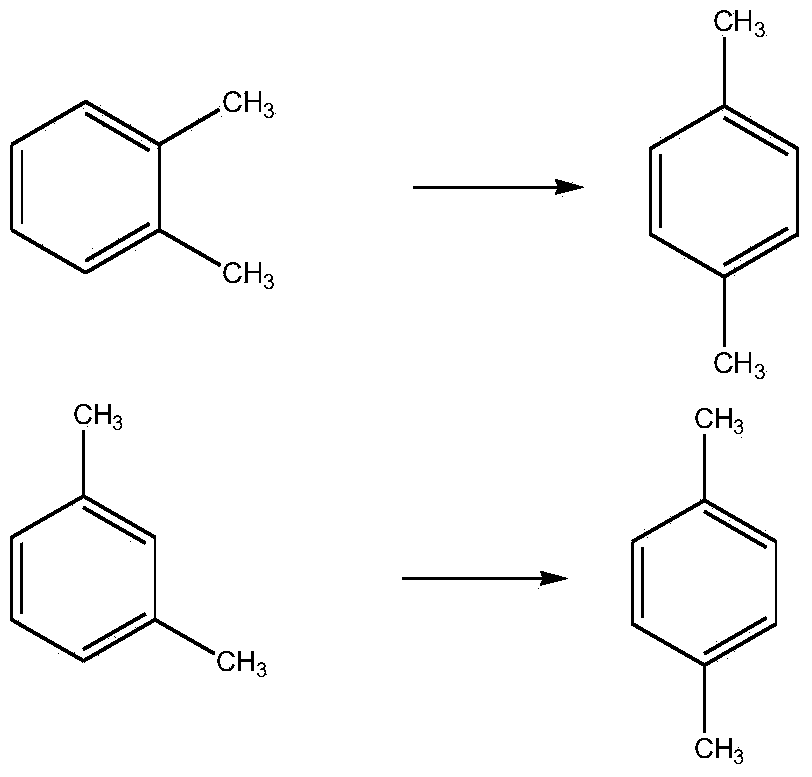Separation method for producing paraxylene
A technology of p-xylene and mixed xylene, which is applied in the production of bulk chemicals, chemical instruments and methods, and purification/separation of chemical changes. Reduce energy consumption and equipment investment scale, reduce production costs, and reduce overall energy consumption
- Summary
- Abstract
- Description
- Claims
- Application Information
AI Technical Summary
Problems solved by technology
Method used
Image
Examples
Embodiment 1
[0030] according to figure 1 The flow chart shown is to catalyze the carbon eight aromatics (C 8 A) The composition of each substance is used as the basic data to investigate the ability of the present invention to produce p-xylene and the composition of the process stream of each unit. C sent by a typical reformer 8 The composition distribution of A and the logistics composition of each component used in this embodiment are shown in Table 1.
[0031] The mixed xylene selective isomerization-selective hydrogenation process unit uses a fixed-bed reactor, and the inner diameter of the reactor is mm, length 1000 mm, stainless steel. The upper and lower sides of the catalyst bed are filled with quartz sand for air distribution and support. The reactor is filled with composite catalyst A. The reaction conditions are: reaction temperature 400°C, reaction pressure 5.0MPa, hydrogen-to-hydrocarbon ratio (V / V) 450, liquid The mass space velocity is 4h-1 . The mixed xylene raw mate...
Embodiment 2
[0038] according to figure 1 The flow shown is based on C in pyrolysis oil 8 The composition of each substance of A is the basic data, and the ability of the present invention to produce p-xylene and the composition of the process stream of each unit are investigated. C in typical pyrolysis oil 8 The composition distribution of A and the logistics composition of each component used in this embodiment are shown in Table 2.
[0039] Table 2 Example 2 process stream composition table
[0040]
Embodiment 3
[0042] according to figure 1 The flow shown is C in coal tar 8 The composition of each substance of A is the basic data, and the ability of the present invention to produce p-xylene and the composition of the process stream of each unit are investigated. C in typical coal tar 8 The composition distribution of A and the logistics composition of each component used in this embodiment are shown in Table 3.
[0043] Table 3 Example 3 process stream composition table
[0044]
[0045]
PUM
 Login to View More
Login to View More Abstract
Description
Claims
Application Information
 Login to View More
Login to View More - R&D
- Intellectual Property
- Life Sciences
- Materials
- Tech Scout
- Unparalleled Data Quality
- Higher Quality Content
- 60% Fewer Hallucinations
Browse by: Latest US Patents, China's latest patents, Technical Efficacy Thesaurus, Application Domain, Technology Topic, Popular Technical Reports.
© 2025 PatSnap. All rights reserved.Legal|Privacy policy|Modern Slavery Act Transparency Statement|Sitemap|About US| Contact US: help@patsnap.com



